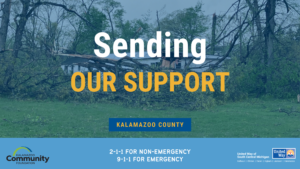
Healthcare
Impacts of discrimination lead to limited access to quality health care and contribute to chronic stress. Additionally, data shows that most members of the LGBTQIA+ community have experienced acute discrimination and sometimes abuse at the hands of medical providers. These rates of discrimination are even higher among transgender and transgender people of color. The 2015 US Transgender Survey reported that 23% of transgender respondents avoided going to a doctor when they needed to because they feared being mistreated, and 33% did not go because they could not afford it. LGBT older adults report having received inferior, neglectful health care or have been denied health care altogether.
A few moments in history highlight the harms LGBTQIA+ people have faced and continue to experience:
- From 1952 to 1973, homosexuality was listed in the Diagnostic and Statistical Manual of Mental Disorders (DSM), a text published by the American Psychiatric Association (APA) to diagnose and treat mental disorders. As a result, homosexuality was “treated” by medical professionals including the use of electroshock therapy. In 1974, the DSM was updated and removed this diagnosis.
- Being transgender was listed as a mental disorder in the DSM-III until being removed in 2012. At the same time a diagnosis was added, gender dysphoria, to recognize the negative psychological impacts a transgender person may experience as a result of the mismatch between their biological sex and gender identity. For decades, the APA has called on psychologists to take the lead in removing the stigma associated with LGBT identities and called for support of social and legal recognition of LGBT people.
- At the peak of the AIDS epidemic, AIDS killed 324,029 people in the USA between 1987 and 1998. The lack of early government response to the AIDS epidemic has cost millions of lives since the 1980s. Ronald Reagan’s press secretary was recorded as joking about the “gay plague” during a press conference in 1982 while the administration did nothing to address the growing health crisis. The stigma associated with HIV continues to negatively impact prevention and treatment efforts. Today, treatment of HIV is considered one of the most impactful strategies for preventing transmission. With the help of medication, people living with HIV can suppress their viral loads and when those viral loads are low (undetectable), they cannot transmit HIV sexually.
- Until 2010, healthcare providers could deny transgender people coverage for transition-related care citing transgender experience as a pre-existing condition. And, still today, many insurance companies include specific trans exclusion language to exclude trans-related health care coverage.
- Currently, it’s legal to practice conversion or reparative therapy on minors in 19 states. Conversion or reparative therapy seek to change a person’s sexual orientation or gender identity to straight or cisgender. Most major medical professional organizations including the American Medical Association, American Academy of Family Physicians, American Counselling Association, American Academy of Nursing, and more oppose these practices and cite considerable research demonstrating that conversion and reparative therapies not only don’t work, but cause significant harm to that patient’s physical and mental wellbeing.
- Currently, 23 states ban a medical professional’s recommended best practice medication and surgical care for transgender youth.
Discrimination and bias toward oppressed groups, including the LGBTQIA+ community, can lead to an increase in stress. This stress can manifest as anxiety, depression, post-traumatic stress, or substance abuse. In turn, LGBTQIA+ people experience more health disparities. To be clear, being LGBTQIA+ is not the risk factor, discrimination is. Discrimination is also associated with LGBTQIA+ people needing to take more sick days, experiencing serious physical health problems, engaging in higher-risk sexual behavior, and delaying urgent and preventative care.
TODAY’S CHALLENGE
Read:
- ‘I felt judged’: LGBTQ+ Americans report significantly more medical discrimination. The 19th News, (Sept 22, 2022). [5 minute read]
- Dana Rosenfeld, The AIDS Epidemic’s Lasting Impact on Gay Men. The British Academy, (February 19, 2018). [6 minute read]
- Keren Landman, Fresh Challenges to State Exclusions on Transgender Health Coverage. NPR, (March 12, 2019). [7 minute read]
Watch:
- LGBTQIA+ People Talk About Their Experiences Accessing Health Care, North Western Melbourne Primary Health Network, (July 26, 2018). [6 minute video]
Engage:
- As an ally, consider talking to your medical providers and asking if they provide gender affirming care or if they have received any form of LGBTQIA+ cultural competency or inclusion training.
- If your employer offers health insurance, consider exploring whether the offered plans are inclusive for LGBTQIA+ people (consider trans-affirming care, in-network providers who are LGBTQIA+ inclusive, inclusive reproductive assistance coverage, etc).
- If you are an LGBTQIA+ person who has experienced discrimination in your medical care, consider inviting a close friend or loved one to accompany you to appointments and advocate on your behalf. Additionally, OutFront Kalamazoo has a list of affirming care providers and the Salus Center (Lansing’s LGBTQIA+ Community Center) has a list of healthcare provider resources.










